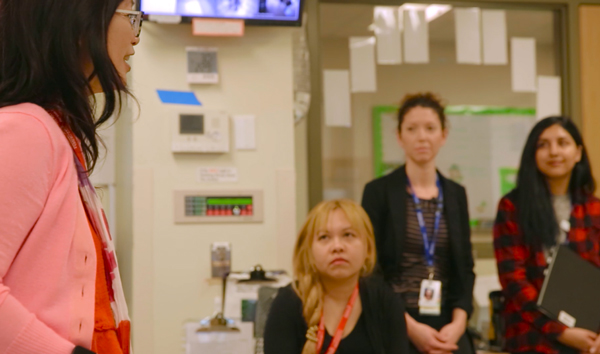
Team-Based Care Pathway Stage 2
Team Building
In this stage, your team is preparing to work together, and will need to work on things like building trust, establishing a team vision, communication and roles/responsibilities. Setting aside time to connect as a team will support team cohesion, shared understanding and trust.
Unsure where to begin? The Team Effectiveness Tool can help you determine what steps you and your team may need to take together.
Are you ready to build a high-functioning team?
Here’s what to consider in the ‘Team Building’ phase:
How will we work together towards our shared goals?
When all members understand their own role, and the roles of others, they can begin to work on improving processes and optimizing patient care. Often, several members of the team can perform similar roles, so building trust and using effective communication is important. Stay curious, and seek to learn from others on your team!
- A great tool for understanding and optimizing role and scope is the UBC Innovation Support Unit’s Team Mapping process.
- The UBC Team-Based Care on the Run series can help teams understand role clarity, communication and conflict resolution.
- Also See Warm Handoffs: A Guide for Clinicians to support your approach to communication as a team.
How will our team establish a way to connect regularly?
Did we mention the importance of team communication? In high-functioning teams, communication takes a variety of forms and is conducted regularly to build trust, understanding and cohesion. When in doubt, make communication your focus in the early stages! Relationships are the foundation of optimal teamwork.
- Huddles: Daily or weekly huddles can be a great way to develop team cohesion and improve patient-centred care.
- Build in cultural safety and humility reflections as part of your huddles.
- Learn to best optimize the use of the Electronic Medical Record for team communication.
- This tool on Patient-Centred Interactions can help teams support each other when introducing team-based care to patients.
- Communication is key! Establishing communication pathways is important for new, and seasoned teams.
How can we learn about your team members’ roles and scope?
By participating in activities like huddles, care conferences, team mapping and even joint visits with other team members, role understanding and optimization will begin to occur as teams create a collaborative environment to work in.
- Not sure where to start? Ask questions, shadow team members, and read about various primary care roles here.
- Spending time with other team members, including administrative and non-clinical staff, can support role optimization and clarity, which can result in increased efficiency and job satisfaction.
- Review the Creating Patient Centred Team Based Primary Care white paper to learn more about implementing patient-centred care principles and practical strategies.
- Remember that the patient is also part of the team, so include them whenever you can! The Patient Voices Network has a wide variety of resources available.
For additional supports for your TBC journey see:
- Doctors of BC: Practice Improvement Program Team-Based Care Coaches – psp@doctorsofbc.ca
- Rural Coordination Centre of BC (RCCbc) Quality Coaching Program
- Your local Health Authority may have Team-Based Care supports available
- If you are part of a Primary Care Network there may be Change Management supports available. See your local Division of Family Practice for more information
- UBC Innovation Support Unit – Department of Family Practice
- Team-Based Care BC maintains an expert list of leaders and content experts across the province and can help you find the support you need
As always, if you know of a great resource or tool that should be added to this pathway or the teambasedcarebc.ca website, please contact us at info@teambasedcarebc.ca.
Even for well-established teams, it can be useful to revisit things like vision and purpose, and consider elements like team complement and efficient space design. Communication is an essential element to effective, high-quality team-based care, so finding time to work on this is key! Investing in time to huddle, connect and communicate will pay off in the long run for your patients, and your practice. Finally, the most important aspect of team-based care is the patient. Remember to place the patient at the centre of the team, and ensure that cultural safety and humility are guiding your practice. We wish you all the best in your TBC journey!